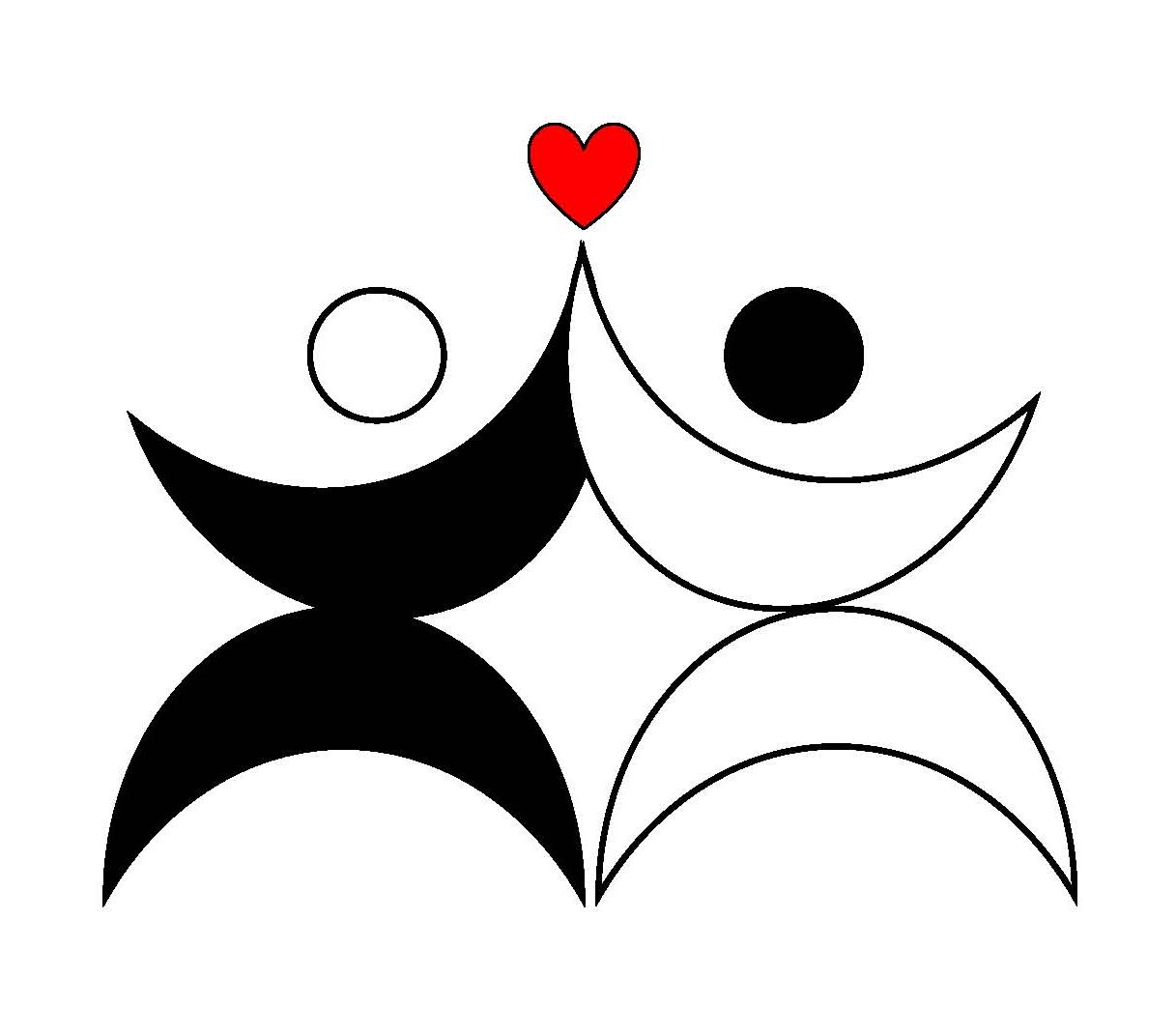Lungile Kunene,
a modern traditional fashion designer
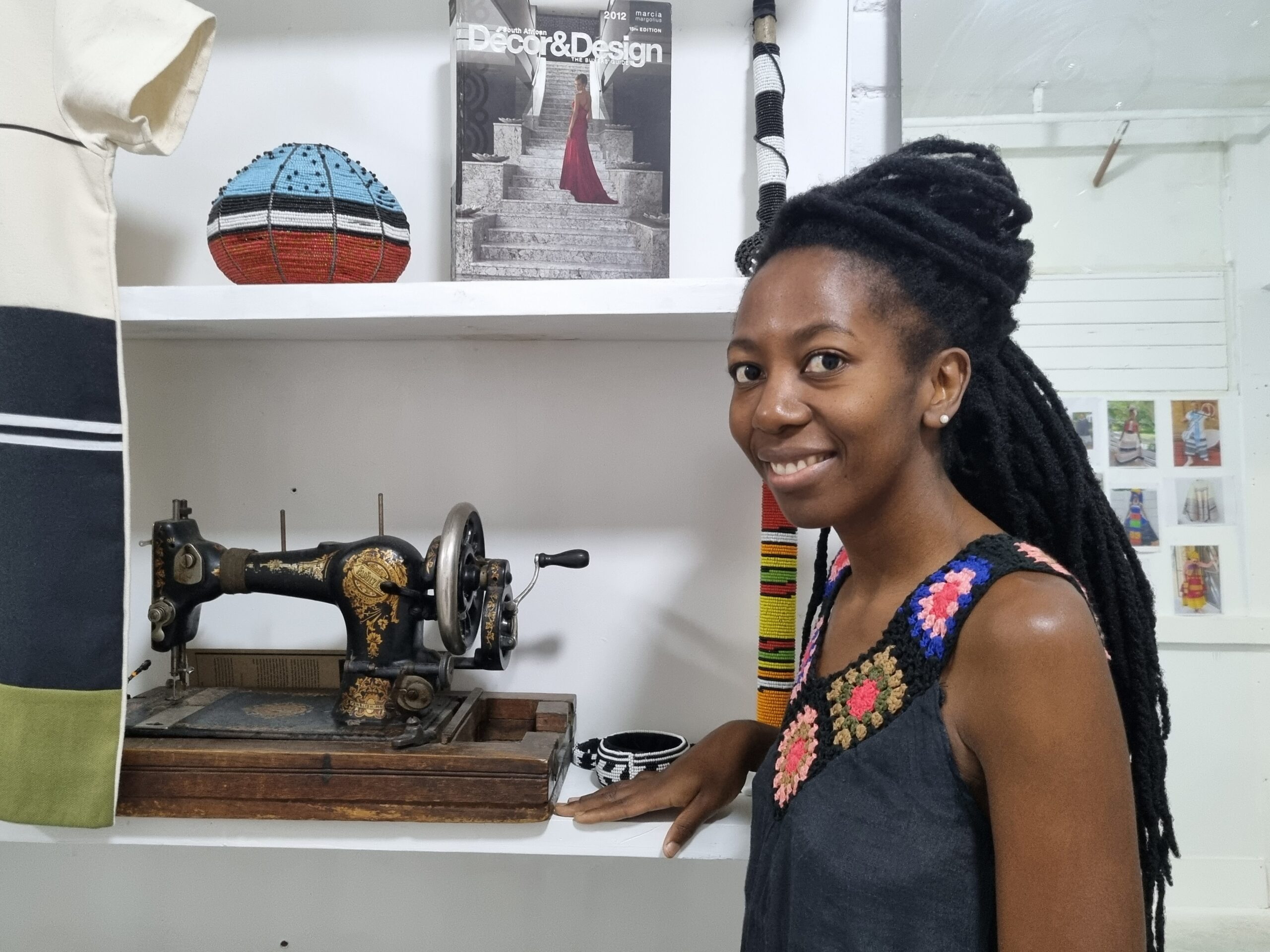
We have the great pleasure to introduce a young and enthusiastic person
1. Tell me about you, how did you come to become a fashion designer?
I remember that at school around 13 I was good in sketching, drawing portraits using different mediums. I was excelling in Art class. Meanwhile at home my mother let me wearing very “girly” clothes and I didn’t like it, so I started to create clothes patterns on paper. Around 16, while finishing High school, I started spontaneously to cut, and stitched by hand transforming my old clothes. At 18, after graduating, I decided to study fashion design in Port Elizabeth.
Didn’t finish the school because moved at 18 to Johannesburg for working in an industrial clothes factory for cutting fabrics. I had a daughter and moved back to my town to my family in Kwa Zulu Natal province. There I started to sell Africa photos online. That experience teaches me how to sell, to keep contact in Africa and abroad. In 2008 was this global financial crisis and I lost my job and I came back to fashion design interest. In 2010 I started my own business. In 2012 found a job in Cape town in an online clothing store. The contract finished and came back once again to fashion design until now.
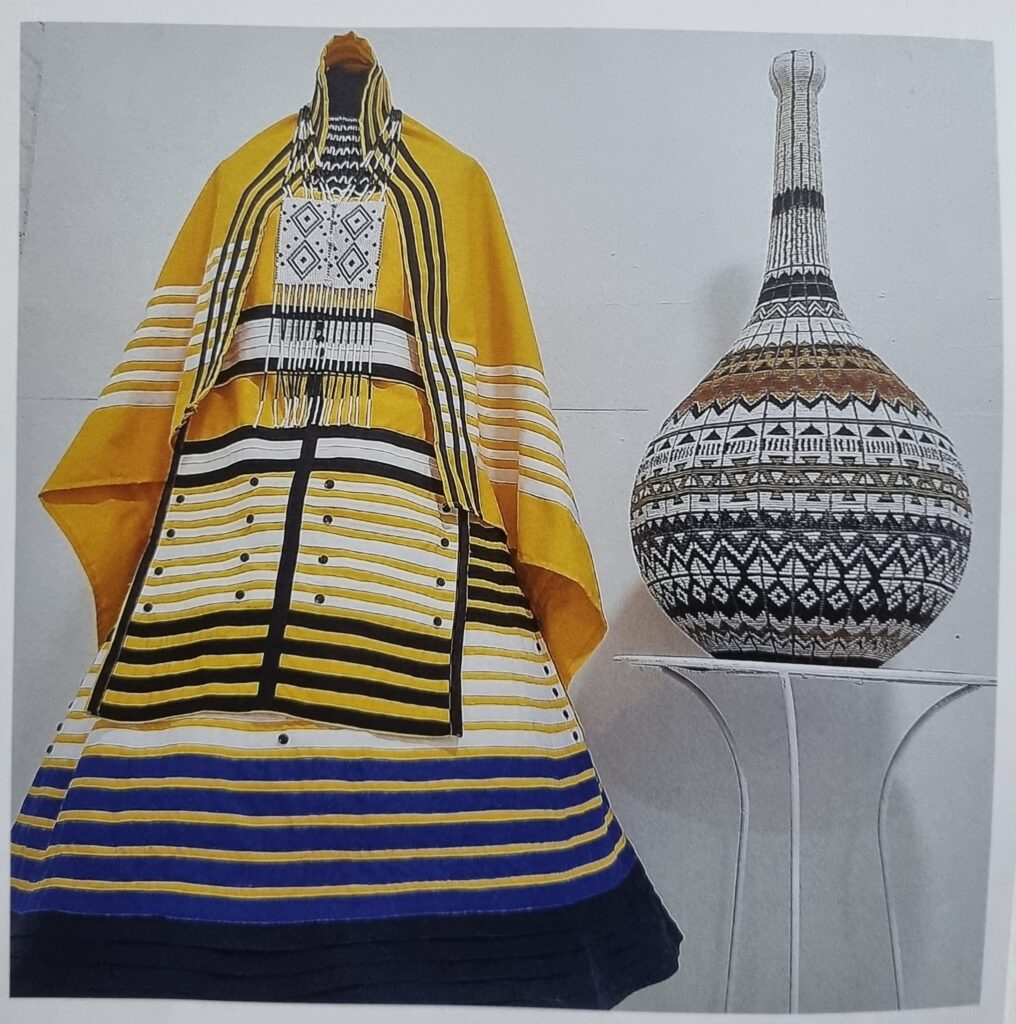
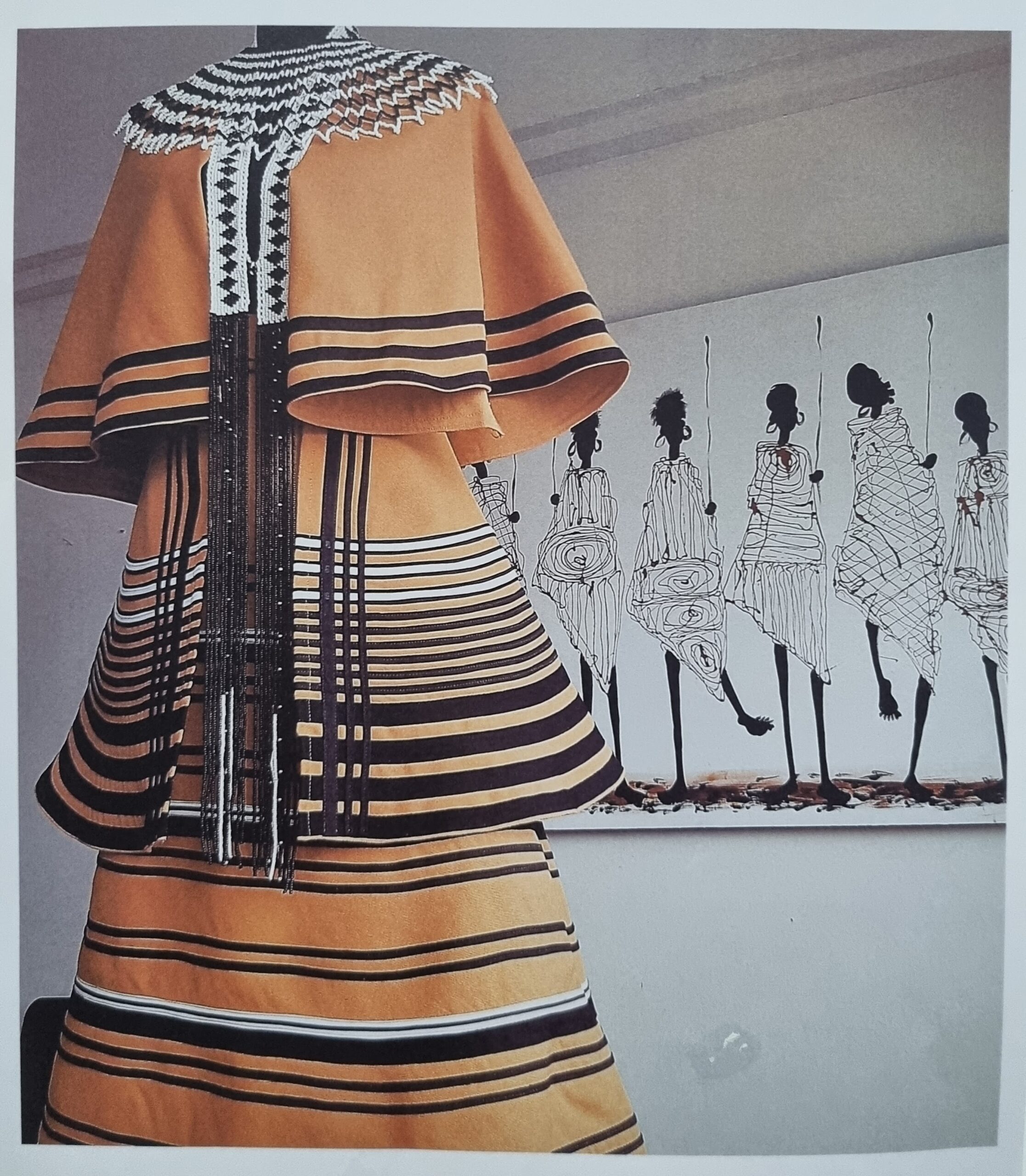
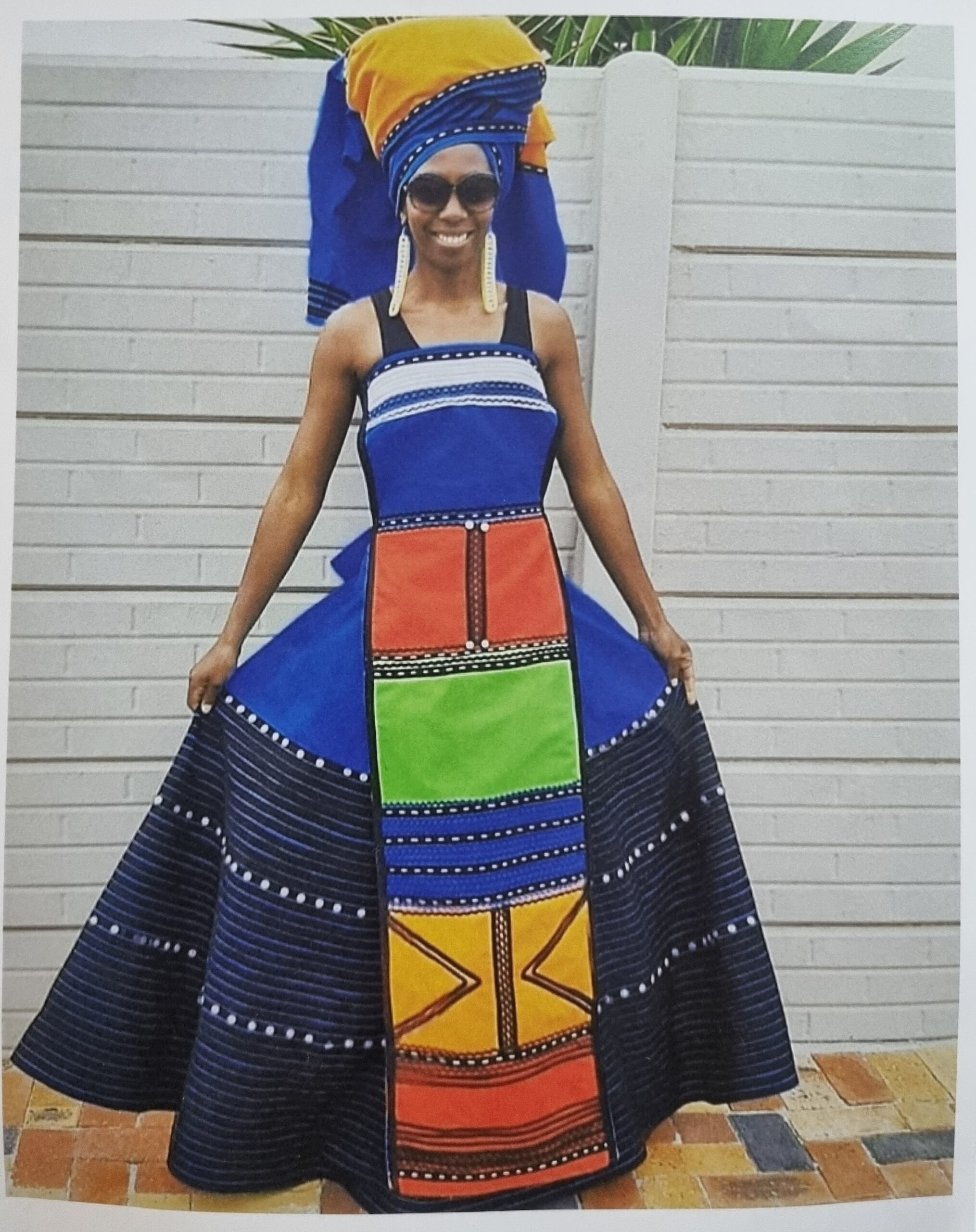
2. What is your main purpose in designing clothes?
I’d like to take pride in my culture and heritage. My mission is to preserve it through traditional clothing. My current focus is on traditional Xhosa clothing-unbhaco.
(see photos above about woman and under for man)
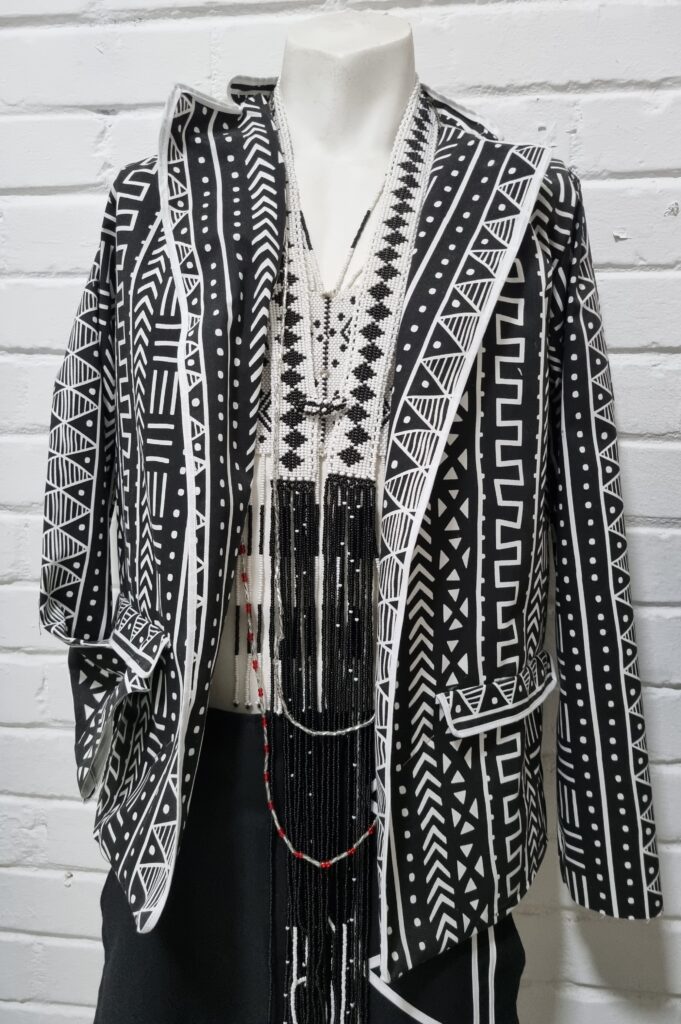
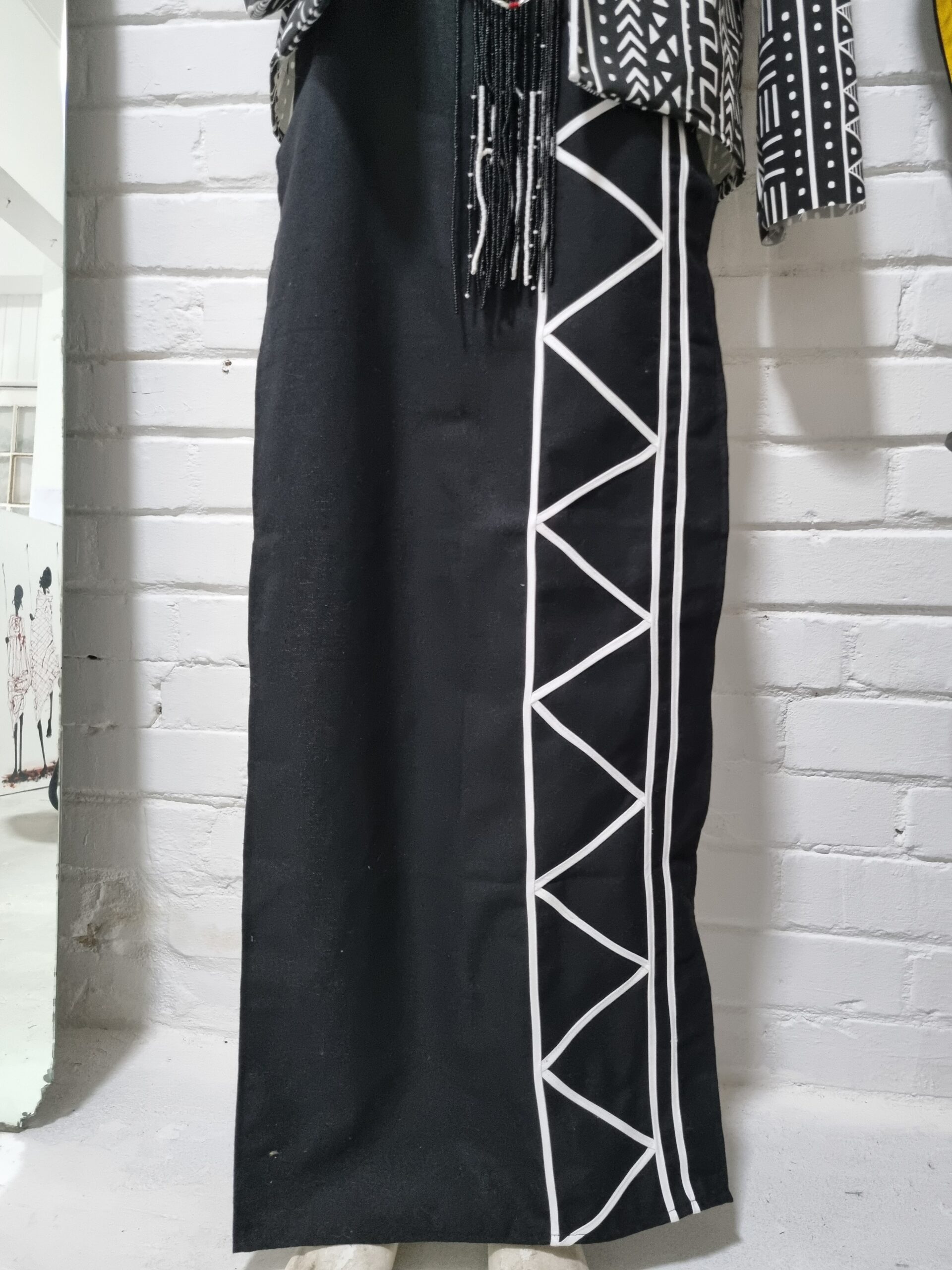

3. Tell me in detail what is about traditional clothing and your way of actualizing?
Patterns has all a meaning: bright colors are meant to be for young women and earthier colors are destined to old married women. If you see on these unfinished clothes are both straight lines (symbolizing prosperity of life) and triangular shaped lines which are related to collaboration, integration and community. My own creativity is here related to the choice of the composition of the colors and choice of beads (less than traditionally and I liked also to add some wool thread).
The traditional feminine outfits are composed by 7 distinct pieces: the skirt, the shawl, the apron, the dock, the bag, the overskirt and a selection of beads around the neck. These are wear layer by layer over the body.
Previously traditional clothing was made from animal skins, but colonisation introduced cotton canvas, which is nowadays my favourite fabric for my creations.
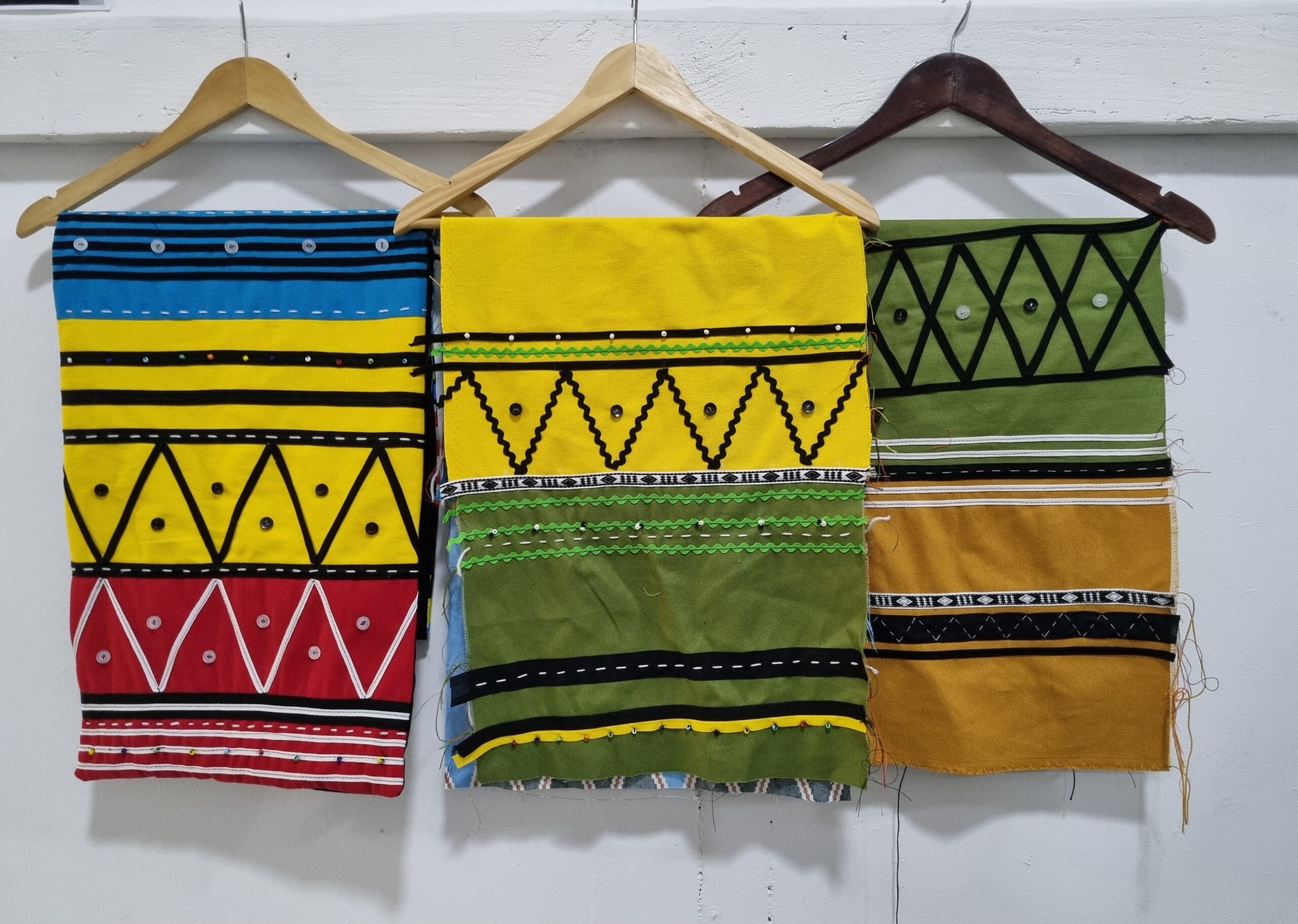
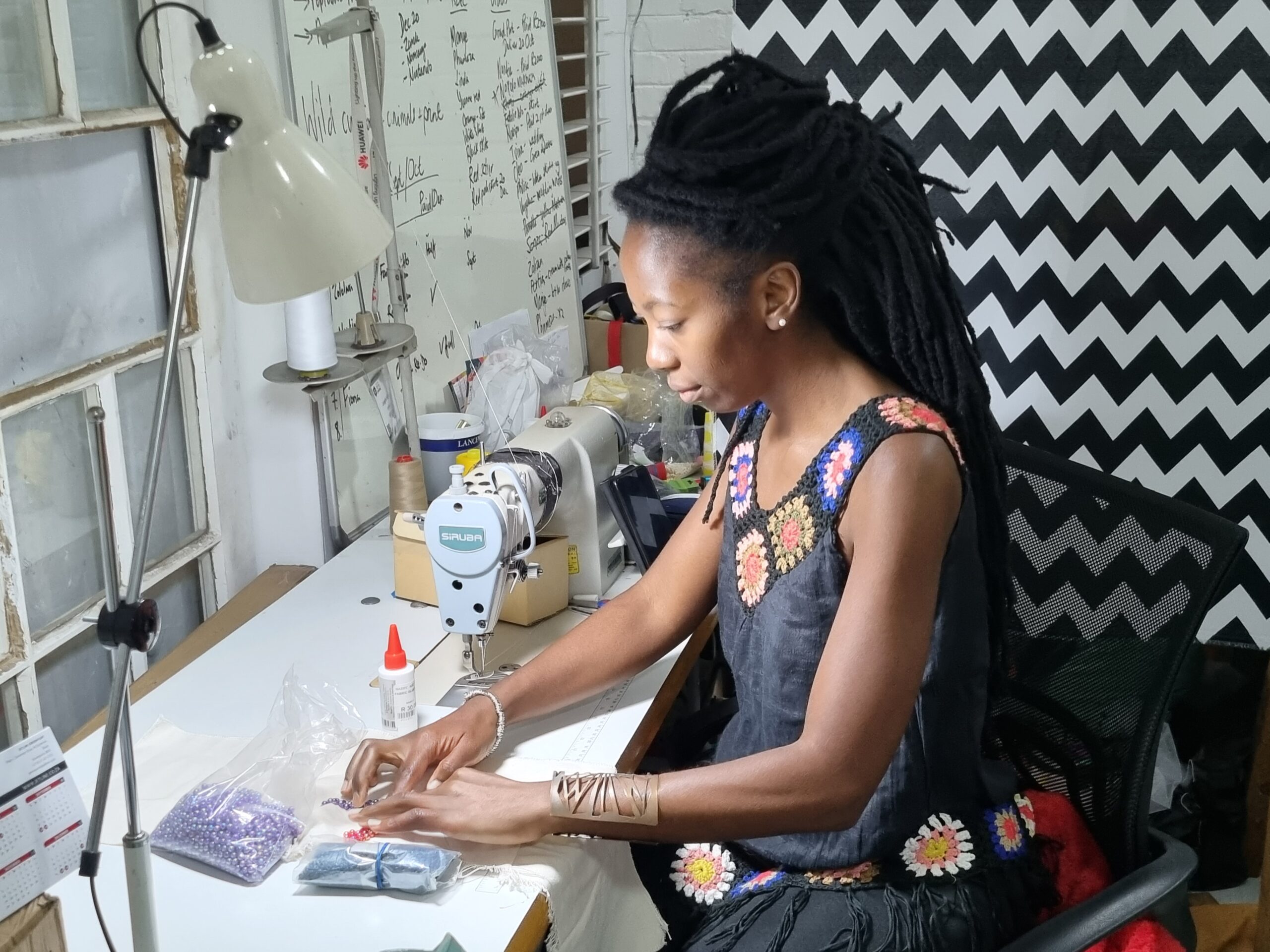
This interview and pictures were taken in Lungile’s atelier in Cape Town on March the 30th 2023 by A. Reiner
